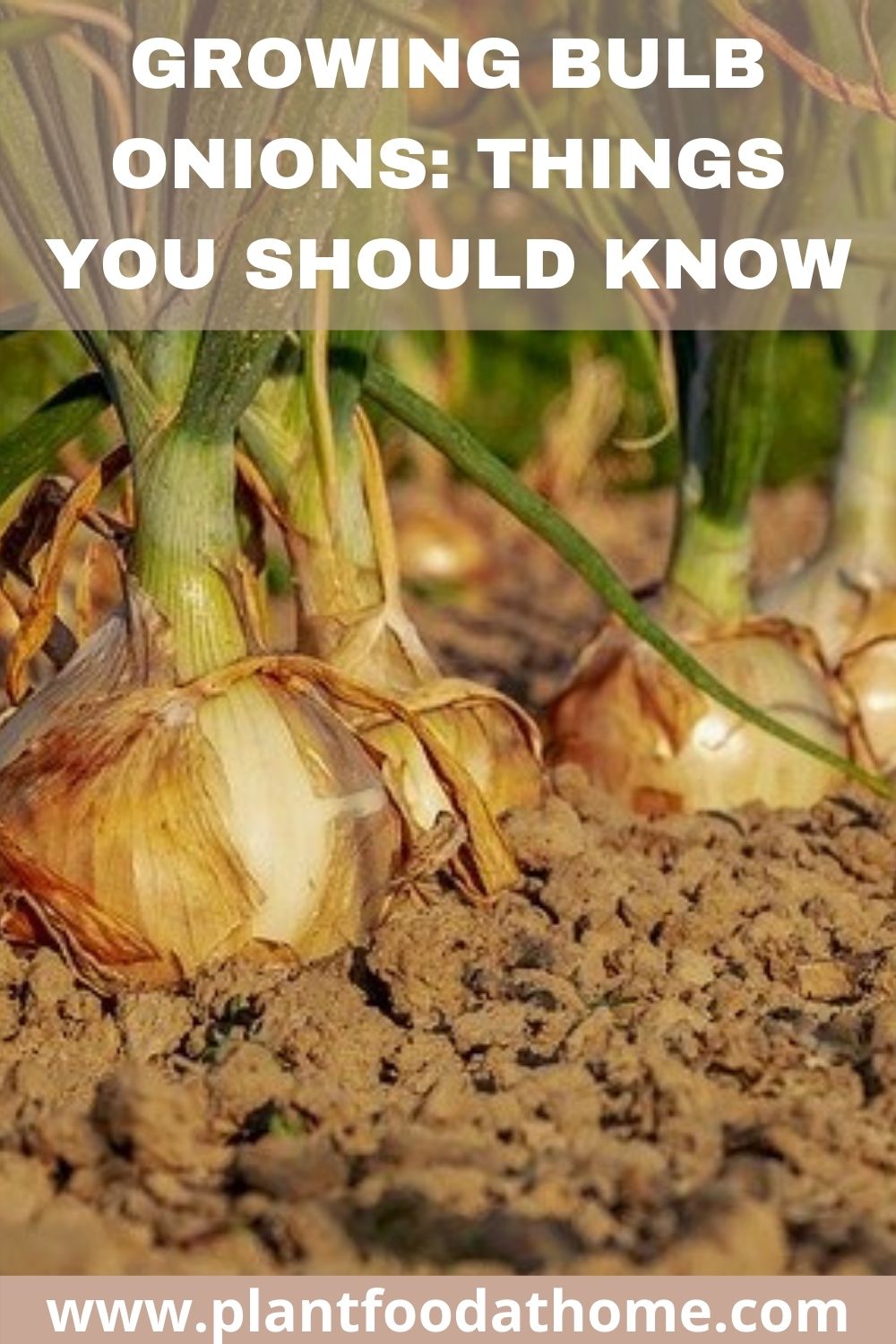We answer some of the most commonly asked questions about growing bulb onions. So if you have ever wanted to grow bulb onions here are 20 things you should know.
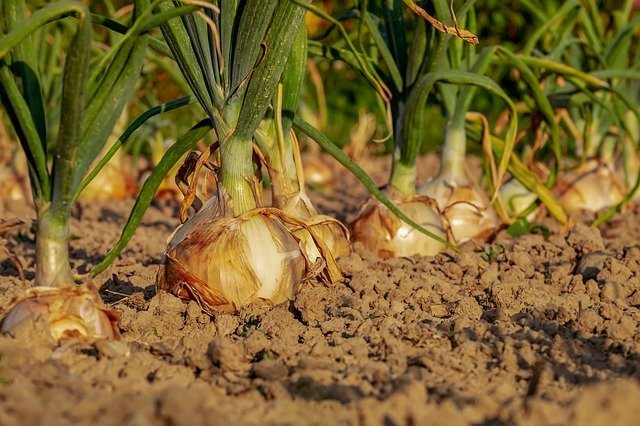
Table of Contents
Questions on Onions
Are onions fruits or vegetables?
Onions are a vegetable. The bulb of the onion is the edible part of the plant, which does not contain seeds, so this places the onion into the category of vegetable.
Why Do Onions Have Layers?
The layers the bulb onion creates is fleshy modified leaves which are technically known as scale leaves. The scale leaves, or layers, are a result of a cluster of leaves growing out from the centre of the base which over time, as it grows bigger, forms the fully developed bulb of the onion we eat.
How Many Layers Do Onions Have?
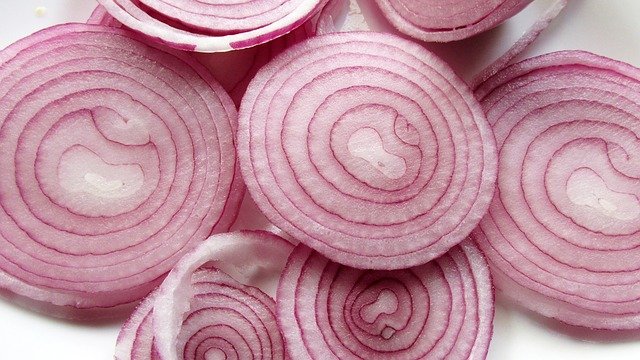
Bulb onions have between 8-13 layers, depending on the variety. The onion layers are also known as onion scales which are modified leaves.
What is a Spanish onion?
A Spanish onion is a variety of onion that is large and sweet and yellow in color but also come in white through to red varieties. They are more delicate in flavor than regular yellow onions making them a good choice to eat raw in salads or on sandwiches.
Spanish onions also have a long shelf life and for this reason, are also known as storage onions.
Growing Onions
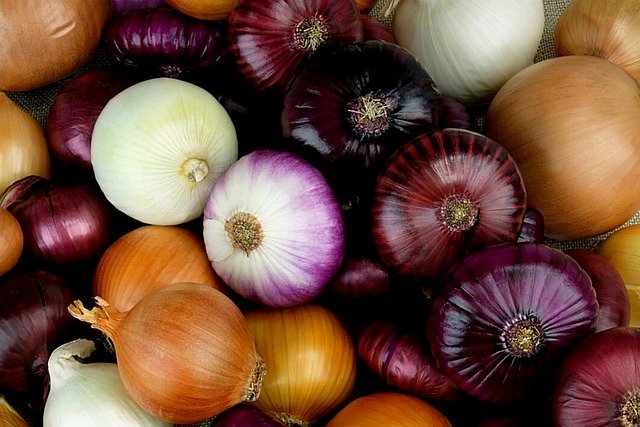
Are Onions Easy to Grow?
With a little know-how, onions are easy to grow.
When growing bulb onions at home, it’s important to know that onions are classed according to the day length. This is the daylight hours required for a particular variety of onion to start forming its bulb.
They are called short-day (10-12 hours of daylight), intermediate-day (12 hours of daylight and commonly grown in Southern Europe), long-day (14 hours of daylight and commonly grown in Europe) and neutral-day (these are not affected by the number of daylight hours).
You might wonder why you wouldn’t just grow the short-day varieties to ensure a crop of onions? Well, their storage life is not as long as some of the other varieties.
Bulb onions are grown by seed, transplants or onion sets. Transplants are onion seedlings while onion sets are small bulb onions grown the previous season, specifically to be grown on in the coming season. This is because onions need a long growing season. As a biannual plant, onions reach mature size in around 2 years. So by planting onion sets, you can harvest mature onions in one season.
Are Onions Easy to Grow From Seed?
Growing onions from seed is easy and straightforward. They grow like most other vegetables started from seed with one notable difference. They require a long growing time and for this reason, they are often started indoors 8-10 weeks before they are transplanted outdoors.
Onion seeds can be sown 1/4 inch deep, into soil that is 50-68°F (10-20°C). The soil should be kept moist and placed in a well-lit position. Seeds will germinate in 7-21 days.
Heat mats and grow lights may be beneficial, depending on the climate.
Do Onions Need full Sun?
Onions need full sun to thrive. So pick a spot in the garden that will receive 6-8 hours of sunlight a day. Take note of other nearby plants and select a planting location where the onions will not be shaded out by other plants.
How Many Onions Grow From One Bulb?
One onion bulb will grow one onion. When onion bulbs are planted, they are a small version of a larger onion that has been grown the previous season. The small planted onion bulb swells and develops into one mature onion.
Why do Onions Flower?
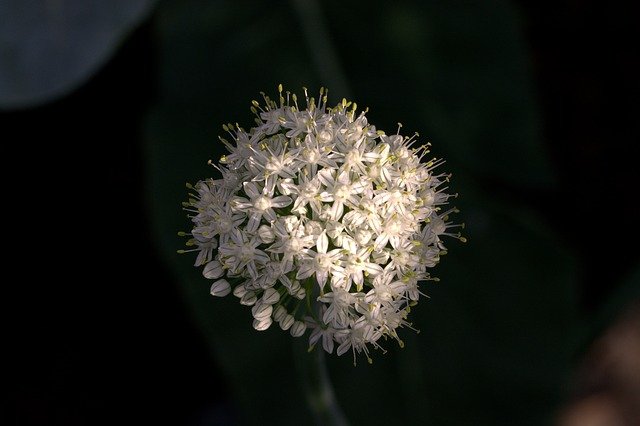
Onions flower when temperatures become too warm for them or the plant becomes stressed. If the growing conditions are not ideal, the onion plant will develop a flower stem, proceed to flower and then set seed. This is natures way of ensuring the next crop.
Additionally, most bulb onions are grown as an annual when they are actually a biannual plant. So usually sometime in the second year of growing, onion plants will naturally flower and set seed in order to produce the next crop of onions.
Onion flowers are commonly white but also produce shades of pink and purple flowers depending on the variety.
Does Onion Grow Underground?
The bulb of the onion grows underground while the tops of the onion grow above ground.
Above ground, the onion leaves form a stem of hollow fan green leaves while the bulb develops below ground.
Do Onions Have Seeds?
Onion plants produce seeds through their flower stem, grown above ground. While onion bulbs, grown below ground, do not have seeds.
In order to collect onion seeds, you need to know that bulb onion plants are biennial plants so they will flower in their second year of growth. After flowering, the onion plant sets seed.
How Many Onions Does One Seed Produce?
Bulb onion seeds produce one onion seedling or set. This will then grow one bulb onion.
Is Onion a Nightshade?
No, onions are not in the nightshade family. Nightshade is the informal name for plants that are part of the Solanaceae family which includes tomatoes, eggplants, potatoes and peppers.
Bulb onions are actually botanically known as Allium cepa and part of the genus Allium. Close plant relatives include shallots, chives, leeks, scallion, garlic and Chinese onion.
Do Onions Like Manure?
The addition of a small amount of manure is fantastic for growing onions. Like most vegetables, onions prefer fertile and free-draining soil. And soil fertility can be increased with the use of compost and well-rotted manure.
Fertile soil helps feed the onion plant and provides the ideal growing conditions to produce a healthy onion bulb.
Manures such as well-composted chicken manure are ideal.
However, don’t overdo the manure or fertilizers as too much can encourage leaf growth over the onion bulb formation. So some manure at the start of the growing season is ideal to help feed the soil, keeping it fertile and healthy for growing thriving bulb onions.
How Cold Can Onions Tolerate
Many onion varieties are cold hardy to 20°F (-6°C.) though they thrive in ideal temperatures of 55-75°F (13-24°C).
So onions are indeed cold hardy, in fact, they despise hot humid and wet conditions which will cause mold and rot the onion bulbs.
Curing and Storing Onions
Do Onions Need to be Dried After Picking?
You do not need to dry onions to eat them fresh. Simply dig them up and they can be used fresh for cooking.
However, drying, or curing onions is required in order to store them for a longer period of time.
Why Cure Onions?
The reason onions are cured is to increase their storage life. Curing is the process of drying the onions.
You can do this by drying off freshly harvested onions in a warm, dry and airy place for 2-3 weeks until they are competently dry. Make sure wherever they are dried, the environment is dry and that there is really good airflow. Curing is usually down outdoors for good ventilation, in a sheltered position such as on a veranda or outdoor shelf under the eaves for rain protection.
Some gardeners simply leave onions on top of the soil where they have been harvested, for a few days before moving them undercover for a longer curing time. But just be sure the sun isn’t too strong or you might risk the onions getting sunburnt.
You will know the onions have been successfully cured once all the stems have dried and turned brown.
Cured onions can then be carefully brushed clean of dirt while keeping the onion scales (skin) intact, stems trimmed to a couple of inches and roots trimmed.
Onions for long term storage are described as pungent onions. When cured properly, they can be stored for the winter and up to 6-12 months.
Why Hang Onions?
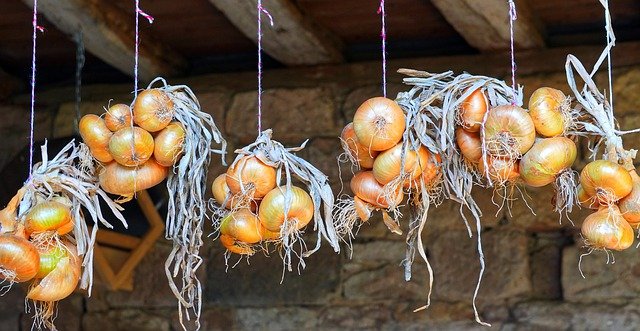
Hanging onions during the curing process is thought to make them cure faster. Also, hanging allows for important airflow which helps the onion dry and cure properly.
Eating Onions
Why do Onions Sprout?
Onions sprouting in the kitchen cupboard? They do this because they are ready to start growing. Even in a cool, dark and dry place, onions kept in the kitchen will receive warmth and some light; enough to make them think it’s time to sprout.
The ideal storing temperatures for onions are 55-65°F (13-18°C) which is usually a lot cooler than the kitchen.
By the way, some grocery store-bought onions have been sprayed with a growth inhibitor to stop them from sprouting. Just another good reason to grow your own onions, as you can grow organic onions, free from chemicals.
Are Onions With Sprouts Edible?
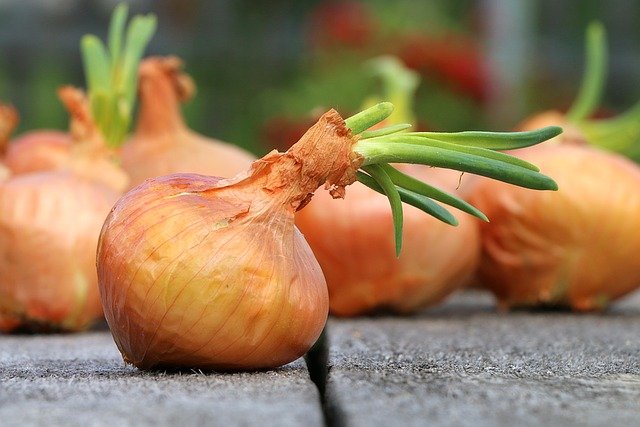
Yes, you can eat onions that have sprouted. But the taste will be somewhat diminished. When the onion sprouts, it starts to put its energy into the new shoots. This uses the available sugars in the onion bulb and effects the flavor.
To eat the sprouted onion, it’s best to remove the entire stem all the way through the middle of the onion. Do this by first cutting the onion in half and simply removing the ‘core’ of the onion. Then you can consume the remaining onion layers.
Conclusion
There is a lot to explore in the wonderful world of onions. Here I have answered 20 questions about onions which I hope you have found interesting. And just maybe you are inspired to try growing your own onions at home?
Some of My Favorite Kitchen Items:
Further Reading:
- 8 Reasons Onions Are Small (With Solutions)
- Growth Stages of an Onion: From Seed to Harvest
- Why Is My Onion Bitter? Answered!
- How to Grow Beets: Planting, Growing and Harvesting Beetroot
- How Many Ears Of Corn Grow On One Stalk? (Answered!)
- How to Grow Radishes: the Easiest Vegetable to Grow
- How to Grow Garlic: Growing and Harvesting the Best Garlic
- Why Are My Garlic Bulbs So Small? Answered!
- Tips to get Asparagus to Come Up: Growing Tips
- Why Are My Sweet Potato Leaves Turning Yellow?
- Why Are My Leeks So Thin? (And how to fix them!)
